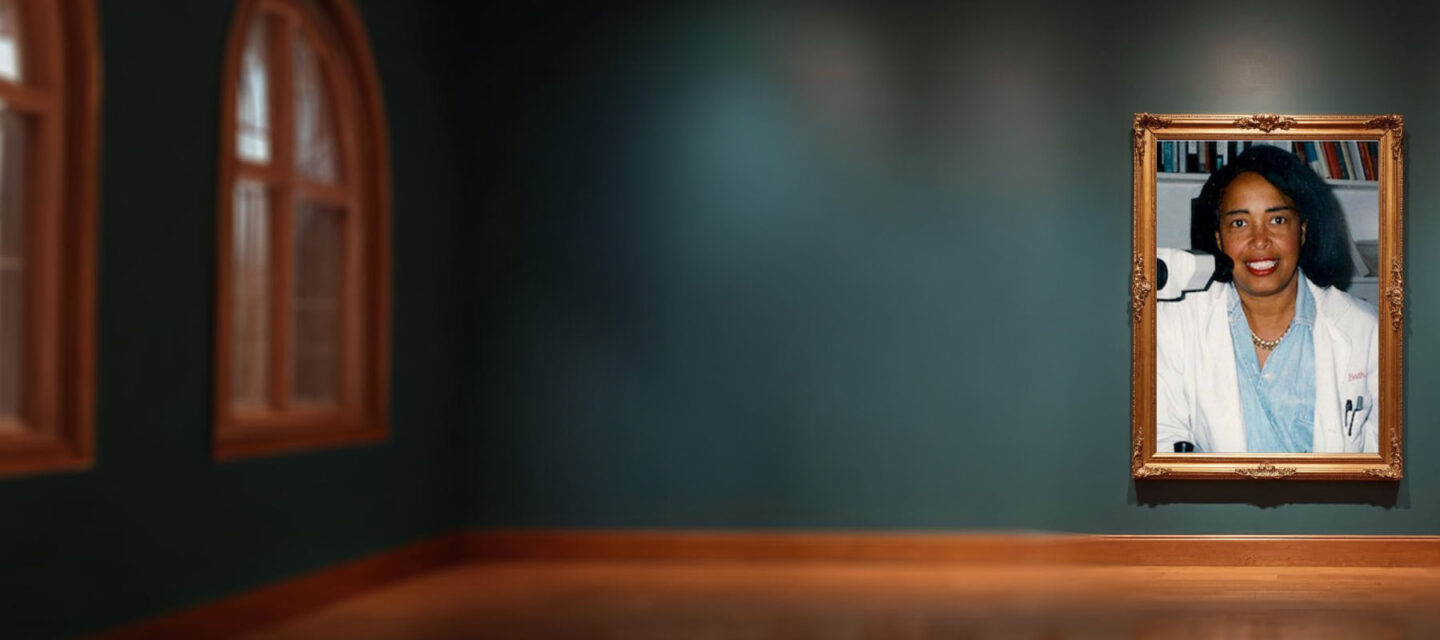
How to drive meaningful progress on DEI, without sparking political resistance
As corporate America adjusts to a shifting political environment under President Donald Trump, companies must rethink their approach to DEI. ...

by Jean-Louis Barsoux, Cyril Bouquet, Michael R. Wade Published October 24, 2024 in Diversity, Equity, and Inclusion • 7 min read
Innovation is widely viewed as an engine of progress; not only for driving economic growth and bringing vital improvements in fields such as science and medicine, but also for tackling issues like social inequality.
Given that anyone can have a good idea, you might expect the distribution of US patents to reflect the demographics of the workplace. Sadly, as we know, this is far from the case. Multiple studies show that two groups lag far behind: women and African Americans.
Their underrepresentation in the fields of science, technology, engineering, and math (STEM subjects) is often used as an explanation for this imbalance. But data also shows that STEM-trained women and African Americans are far less likely to apply for patents than White males. This points to the existence of significant barriers blocking underrepresented groups from realizing their breakthrough ideas – yet it is these “outsiders” who can bring the kind of combinatorial thinking crucial for novel solutions. With fewer preconceptions than insiders, they can more easily connect disparate thoughts.
The story of Dr Patricia Bath, a groundbreaking ophthalmologist and the inventor of modern cataract surgery, is a powerful example of how those considered outsiders possess key skills for developing innovative solutions — and the formidable barriers they face when attempting to introduce their much-needed innovations to society.
In 1986, Bath filed a patent for a laser technique to treat cataracts. Two years later, aged 45, she became the first African American woman to receive a medical patent. Her invention was a breakthrough in combating preventable blindness that has helped improve or restore the sight of millions of people worldwide.
But Bath’s journey was a tortuous one. In 1969, as a young Black woman in a White male preserve, she faced gender, racial, and age biases that affected her perceived credibility and, therefore, ability to advance in her chosen field. But she used one of the key advantages conferred by her demographic differences and fresh perspective: the ability to see problems that others missed. Pursuing a medical internship at Harlem Hospital and a fellowship in ophthalmology at Columbia University, she quickly noticed a glaring disparity: the prevalence of blindness among African Americans was double that of White Americans. And, by trawling through the medical records of patients at both clinics, she realized that this was no genetic quirk but rather the result of poor access to proper eye care (foreshadowing revelations of health inequity in marginalized communities during the Covid-19 pandemic).
Bath persuaded her professors at Columbia to operate for free on blind patients in Harlem, where she got a crash course in cornea and cataract surgery as a volunteer assistant surgeon. Four years later, when she became the first woman faculty member at UCLA’s Jules Stein Eye Institute, she was forced to prove herself all over again, and only after refusing to work in an office in the basement next to the lab animals was she able to secure a more suitable location to work.
Research shows that these forms of indirect, subtle, and often unintentional discrimination also inhibit cognitive performance.
For many women and minorities, the cumulative effect of such microaggressions impacts their self-esteem and organizational commitment. Research shows that these forms of indirect, subtle, and often unintentional discrimination also inhibit cognitive performance. As such, they are bound to erode engagement in innovation, which demands focus, self-belief, and a willingness to challenge orthodoxy. At UCLA Bath pursued her interest in health disparities and enlisted the help of two African Americans from outside her discipline to set up the American Institute for the Prevention of Blindness, which champions sight as a basic human right. The nonprofit initiated a new approach – combining aspects of public health, community medicine, and clinical ophthalmology – now known as community ophthalmology, that changed the course of medicine and is now practiced worldwide.
While not belonging to the demographic majority may bestow a creative edge in terms of spotting issues and generating alternative solutions, not being part of the in-group makes it much harder to marshal the resources and backing needed to push ideas through the system. Unsurprisingly, many people give up.
Bath confronted this barrier when she conceived the radical idea of dissolving cataracts using lasers — a technology primarily associated with defense systems and blinding laser weapons at the time. She believed her approach could be less invasive and faster than existing treatments. Unfortunately, the ecosystem at UCLA did not support her work and her colleagues offered zero encouragement. “When I talked to people about it,” she recalled, “They said it couldn’t be done.” Bath conducted initial experiments in her lab, but UCLA did not have the necessary lasers, and she was unable to secure grants to pursue her research in the US. Instead of giving up, as many would have done, she reached out to connections abroad and “nagged them until they agreed to provide access to their labs.”
Eventually, she was able to finalize her complex three-in-one device – a tiny probe consisting of an optical laser fiber surrounded by irrigation and suction tubes – at UCLA and performed her first tests on donor eyes. Having perfected the technique, she reported her scientific breakthrough to the lab director. His response spoke volumes: “You didn’t do that,” he told her. “That’s impossible.” He wouldn’t look her in the face.
Bath is notable not only for her inventions and advances in medical practice but also for her incredible persistence and determination to overcome the barriers that could have derailed her at multiple points in her innovation journey.
Such disbelief betrayed low expectations on the part of Bath’s lab director. Decades of research have established the negative impact of low expectations on performance. Known as the Golem effect, this also extends to innovation. Fortunately, by this stage in her career, Bath was robust enough not to be deterred by negativity and kept her “eyes focused on the prize,” but for aspiring innovators, such slights or expressions of skepticism can be as damaging to their motivation as overt discrimination, crushing people’s confidence and resolve.
Bath went on to improve the laserphaco probe, as she called it, and the method for using it several times, resulting in five US patents (the last of which was awarded in 2003 for a combination laser and ultrasound cataract device) and her technique remains in use worldwide.
Bath died in May 2019. In one of her last public appearances, she testified before the US Senate Judiciary Subcommittee on the hidden obstacles facing women inventors and depriving the US of more innovation, saying, “Based on my own personal experience, the oversights, slights, and disrespect of scientific contributions of women scientists and inventors demonstrated in the 1960s continues even today.”
Among the 610 inductees in the US National Inventors Hall of Fame, there are only 48 women and just 30 African Americans. Until 2022, there was still not one Black woman inductee, with Bath becoming the first (after being nominated 11 years running), along with engineer Marian Croak. (Bath was also posthumously inducted into the National Women’s Hall of Fame in March 2024.)
Bath is notable not only for her inventions and advances in medical practice but also for her incredible persistence and determination to overcome the barriers that could have derailed her at multiple points in her innovation journey. It makes you wonder: How many important innovations is the US still missing out on because of biases and systems that make it extraordinarily difficult for those on the margins to bring their breakthrough ideas to life?
There are lessons in this story for us all. Outsiders like Patricia Bath are able to see the world with fresh eyes and can come up with ideas and solutions that challenge conventional thinking. We need to pay closer attention to these perspectives, which means acknowledging the biases, low expectations, and skepticism that often get in the way.
This is a shortened version of an article that first appeared in MIT Sloan Management Review on 8 February 2022.
All views expressed herein are those of the author and have been specifically developed and published in accordance with the principles of academic freedom. As such, such views are not necessarily held or endorsed by TONOMUS or its affiliates.

Research Professor at IMD
Jean-Louis Barsoux helps organizations, teams, and individuals change and reinvent themselves. He was educated in France and the UK, and holds a PhD in comparative management from Loughborough University in England. His doctorate provided the foundation for the book French Management: Elitism in Action (with Peter Lawrence) and a Harvard Business Review article entitled The Making of French Managers.

Professor of Innovation and Strategy at IMD
Cyril Bouquet is Director of the Innovation in Action program, co-Director of the TransformTECH program and the Business Creativity and Innovation Sprint. As an IMD professor, his research has gained significant recognition in the field. He helps organizations reinvent themselves by letting their top executives explore the future they want to create together.

TONOMUS Professor of Strategy and Digital
Michael R Wade is TONOMUS Professor of Strategy and Digital at IMD and Director of the TONOMUS Global Center for Digital and AI Transformation. He directs a number of open programs such as Leading Digital and AI Transformation, Digital Transformation for Boards, Leading Digital Execution, Digital Transformation Sprint, Digital Transformation in Practice, Business Creativity and Innovation Sprint. He has written 10 books, hundreds of articles, and hosted popular management podcasts including Mike & Amit Talk Tech. In 2021, he was inducted into the Swiss Digital Shapers Hall of Fame.

April 9, 2025 • by Luca Condosta in Diversity, Equity, and Inclusion
As corporate America adjusts to a shifting political environment under President Donald Trump, companies must rethink their approach to DEI. ...

March 27, 2025 • by Jennifer Jordan, Alexander Fleischmann in Diversity, Equity, and Inclusion
Take our quiz to see if you're well-placed to implement new European rules on boardroom equality....
 Audio available
Audio available
March 18, 2025 • by Diana Markaki-Bartholdi in Diversity, Equity, and Inclusion
New EU legislation requires stronger female representation on corporate boards. Here are ways to navigate the transition....
 Audio available
Audio available
March 13, 2025 • by Öykü Işık in Diversity, Equity, and Inclusion
Widespread bias and lack of inclusivity across the tech world deters women from pursuing careers in the sector. This is a significant business risk. Here are some practical actions every reader can...
Explore first person business intelligence from top minds curated for a global executive audience